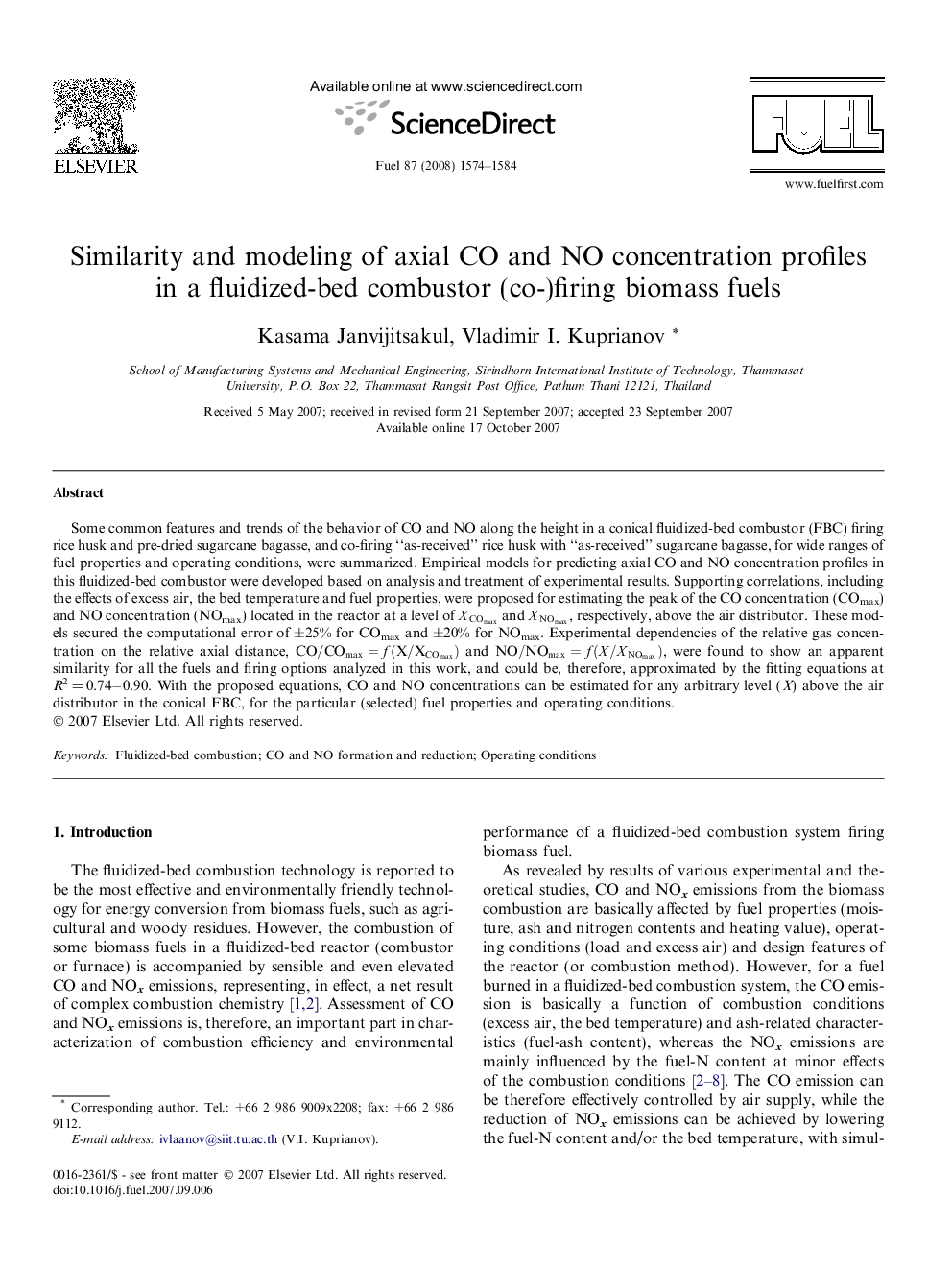| Article ID | Journal | Published Year | Pages | File Type |
|---|---|---|---|---|
| 207894 | Fuel | 2008 | 11 Pages |
Some common features and trends of the behavior of CO and NO along the height in a conical fluidized-bed combustor (FBC) firing rice husk and pre-dried sugarcane bagasse, and co-firing “as-received” rice husk with “as-received” sugarcane bagasse, for wide ranges of fuel properties and operating conditions, were summarized. Empirical models for predicting axial CO and NO concentration profiles in this fluidized-bed combustor were developed based on analysis and treatment of experimental results. Supporting correlations, including the effects of excess air, the bed temperature and fuel properties, were proposed for estimating the peak of the CO concentration (COmax) and NO concentration (NOmax) located in the reactor at a level of XCOmaxXCOmax and XNOmaxXNOmax, respectively, above the air distributor. These models secured the computational error of ±25% for COmax and ±20% for NOmax. Experimental dependencies of the relative gas concentration on the relative axial distance, CO/COmax=f(X/XCOmax)CO/COmax=f(X/XCOmax) and NO/NOmax=f(X/XNOmax)NO/NOmax=f(X/XNOmax), were found to show an apparent similarity for all the fuels and firing options analyzed in this work, and could be, therefore, approximated by the fitting equations at R2 = 0.74−0.90. With the proposed equations, CO and NO concentrations can be estimated for any arbitrary level (X) above the air distributor in the conical FBC, for the particular (selected) fuel properties and operating conditions.
